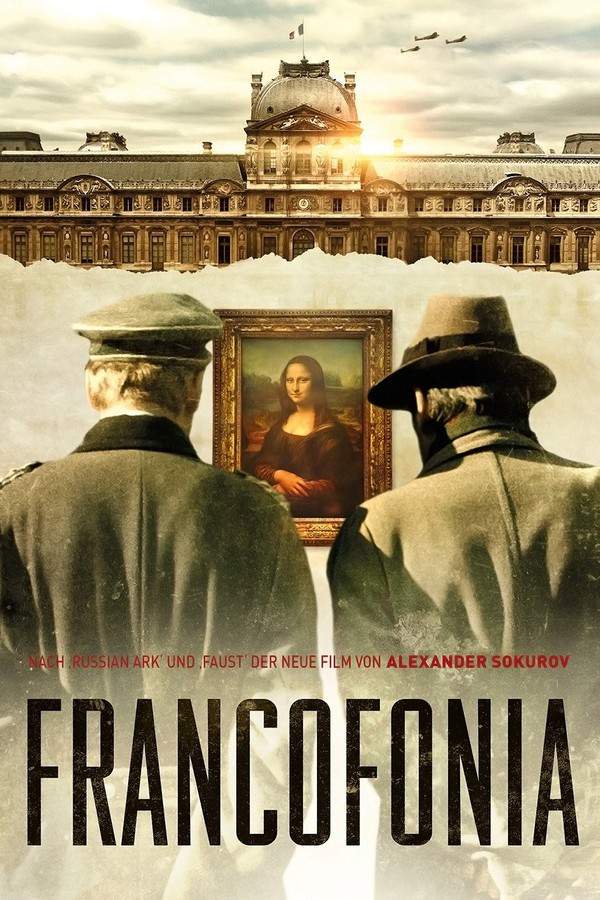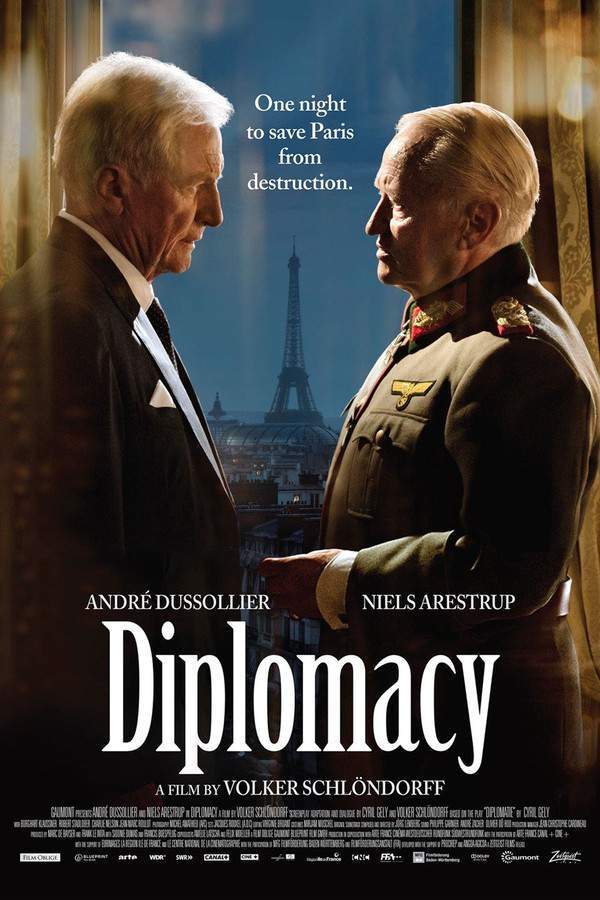
Is Paris Burning?
Year: 1966
Runtime: 173 mins
Language: French
Director: René Clément
‘Burn Paris!’ blares over the phone as World War II draws to a close. General Dietrich von Choltitz is ordered to raze the city if the Allies appear or control slips. He defies the command, angering his superiors but inspiring French resistance groups. Together with Swedish diplomat Raoul Nordling, he assists a resistance leader in rallying his forces.
Warning: spoilers below!
Haven’t seen Is Paris Burning? yet? This summary contains major spoilers. Bookmark the page, watch the movie, and come back for the full breakdown. If you're ready, scroll on and relive the story!
Is Paris Burning? (1966) – Full Plot Summary & Ending Explained
Read the complete plot breakdown of Is Paris Burning? (1966), including all key story events, major twists, and the ending explained in detail. Discover what really happened—and what it all means.
Shortly after the failed 20 July plot to assassinate Adolf Hitler, General von Choltitz Gert Fröbe is installed as the military governor of occupied Paris, a grim assignment meant to keep the city from falling into Allied hands by any means necessary. Hitler believes Choltitz will follow orders to raze Paris if it comes to that, much as Warsaw would be destroyed to deny the Allies a symbolic victory.
As the Allies bypass Paris to strike at Germany directly, the French Resistance divides on how to respond. The Gaullists under Jacques Chaban-Delmas advise patience and caution, while the Communists, led by Colonel Rol-Tanguy, push for an immediate uprising. The two factions eventually align around a plan to seize key government buildings and rally civilian support, a move that could determine whether Paris remains a symbol of French resistance or becomes a showcase of German might.
Choltitz, initially intent on carrying out Hitler’s destruction of the city, faces a complication when his troops fail to dislodge the Resistance from the Paris Police Prefecture. In a pivotal moment, he orders the Luftwaffe to bomb the building, only to retract the move after a persuasive appeal from the Swedish consul Raoul Nordling Orson Welles. Nordling argues that bombing the area risks crippling priceless cultural treasures, including Notre Dame Cathedral, and he urges a pause to seek a truce. This intervention sets in motion a delicate, uneasy compromise between two sides that are still fighting but hoping to avoid total devastation.
The truce is negotiated under great pressure, but it is short-lived. While the Gaullists want to hold fast to the terms, the Communists press on, fighting with dwindling ammunition as the city grapples with its own fate. A critical development emerges when Adrien, a messenger from the Resistance, reaches out to the Americans to explain that Paris must be saved as a strategic and moral landmark. The message lands with General Omar Bradley, who agrees that a symbolic Allied presence is needed. He sanctions the movement of the 2nd Armored Division under General Philippe Leclerc Claude Rich to enter Paris and secure a basic, credible occupation by Free French forces.
As the German难situation grows direr, Choltitz delays the fatal order to destroy the city, doubting that the war can still be won and sensing that capitulation might be the wiser path. In a tense run of events, two SS officers reveal that their mission is not to raze Paris but to rescue the Bayeux Tapestry for Himmler before any destruction, a grim reminder of the war’s cultural losses. The German commander’s hesitation intensifies as his own officers press on with the plan of detonations, but the Allied advance continues to push closer.
Eventually, a line of American tanks—manned by Free French forces with a modest American escort—rolls into Paris. The tanks, named after battles from the Spanish Civil War, push toward the city center, signaling a turning point that convinces Choltitz to abandon the destruction order and surrender. As the line advances, German troops plant mines at strategic points, including Napoleon’s tomb, while civilians emerge to confront the danger and witness the unfolding drama.
When the Free French reach the Hôtel de Ville and the bells of Notre Dame ring again, the mood shifts from fear to celebration. De Gaulle’s parade through the streets, accompanied by cheering crowds, marks a symbolic victory as Paris is finally liberated. In the farewell mood, a voice from the German side lingers on a phone, repeatedly asking, “Is Paris burning?” even as the city’s skyline remains intact. The scene cuts from stark black-and-white footage to color as the closing credits roll, capturing a city and a people reclaiming their place in history.
In the end, the film presents a nuanced portrait of courage, hesitation, and resolve. It emphasizes how a combination of resistance, diplomacy, and strategic military moves helped prevent Paris from being reduced to ashes, and how the city’s liberation became a powerful symbol of resilience. The story intertwines human drama with historical spectacle, inviting viewers to reflect on the choices made by leaders, soldiers, and ordinary citizens under extraordinary pressure. The film invites memory and contemplation, offering a sweeping, meticulously detailed account that stays true to the events it portrays while presenting them in a richly cinematic frame.
Is Paris burning?
Last Updated: October 09, 2025 at 11:09
Unlock the Full Story of Is Paris Burning?
Don't stop at just watching — explore Is Paris Burning? in full detail. From the complete plot summary and scene-by-scene timeline to character breakdowns, thematic analysis, and a deep dive into the ending — every page helps you truly understand what Is Paris Burning? is all about. Plus, discover what's next after the movie.
Is Paris Burning? Timeline
Track the full timeline of Is Paris Burning? with every major event arranged chronologically. Perfect for decoding non-linear storytelling, flashbacks, or parallel narratives with a clear scene-by-scene breakdown.

Similar Movies to Is Paris Burning?
Discover movies like Is Paris Burning? that share similar genres, themes, and storytelling elements. Whether you’re drawn to the atmosphere, character arcs, or plot structure, these curated recommendations will help you explore more films you’ll love.
Explore More About Movie Is Paris Burning?
Is Paris Burning? (1966) Scene-by-Scene Movie Timeline
Is Paris Burning? (1966) Movie Characters, Themes & Settings
Is Paris Burning? (1966) Spoiler-Free Summary & Key Flow
Movies Like Is Paris Burning? – Similar Titles You’ll Enjoy
Francofonia (2016) Movie Recap & Themes
Diplomacy (2014) Full Movie Breakdown
Winter War (2017) Story Summary & Characters
Operation Dunkirk (2017) Plot Summary & Ending Explained
To Paris! (2019) Full Summary & Key Details
Burning at Both Ends (2021) Story Summary & Characters
Paris Underground (1945) Film Overview & Timeline
Arch of Triumph (1948) Story Summary & Characters
The Fox of Paris (1957) Film Overview & Timeline
Grand Illusion (1937) Spoiler-Packed Plot Recap
Le Jour de gloire (1976) Spoiler-Packed Plot Recap
Paris After Dark (1943) Movie Recap & Themes
If Paris Were Told to Us (1956) Story Summary & Characters
Battle of the Bulge (1965) Film Overview & Timeline
The Heart of a Nation (1943) Full Summary & Key Details

















